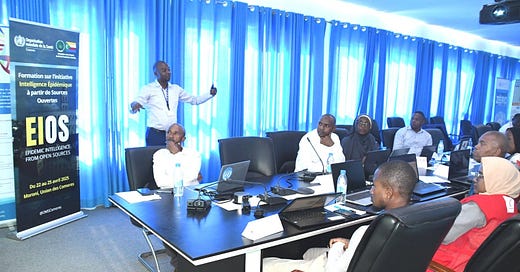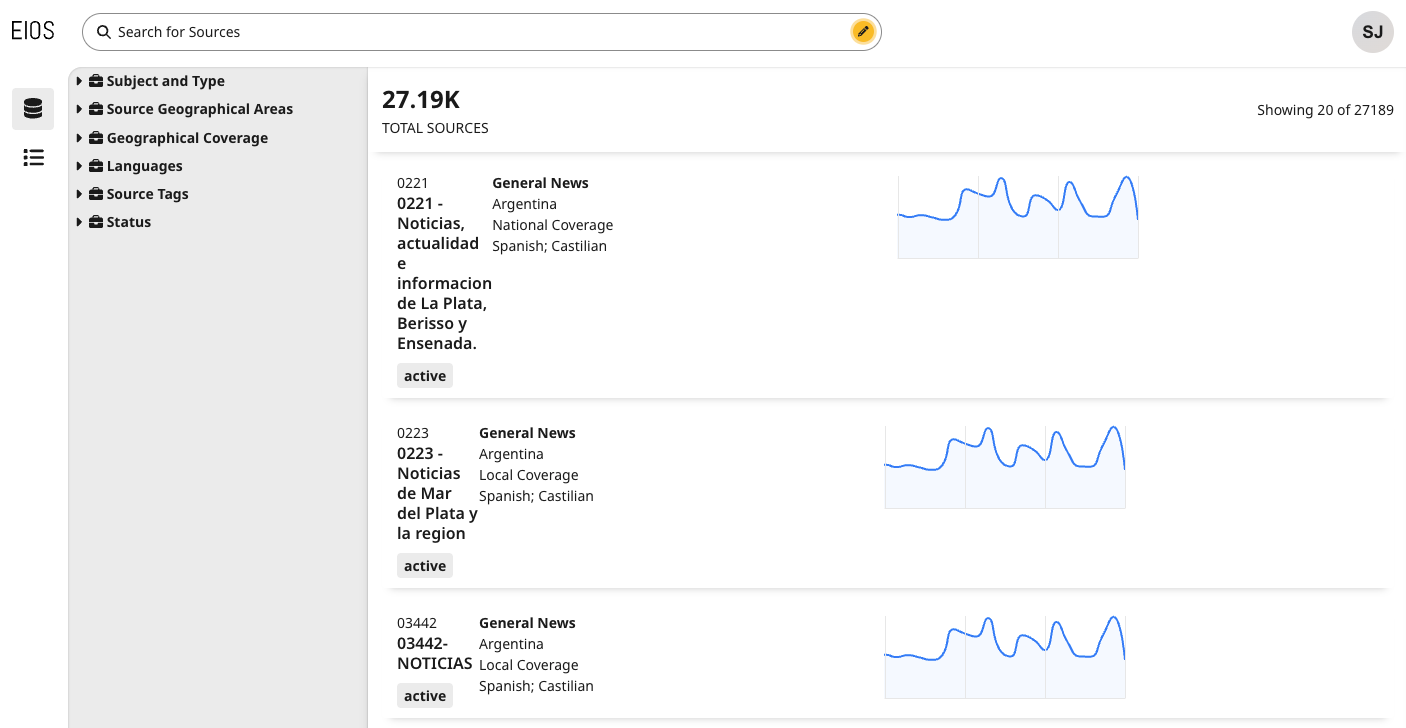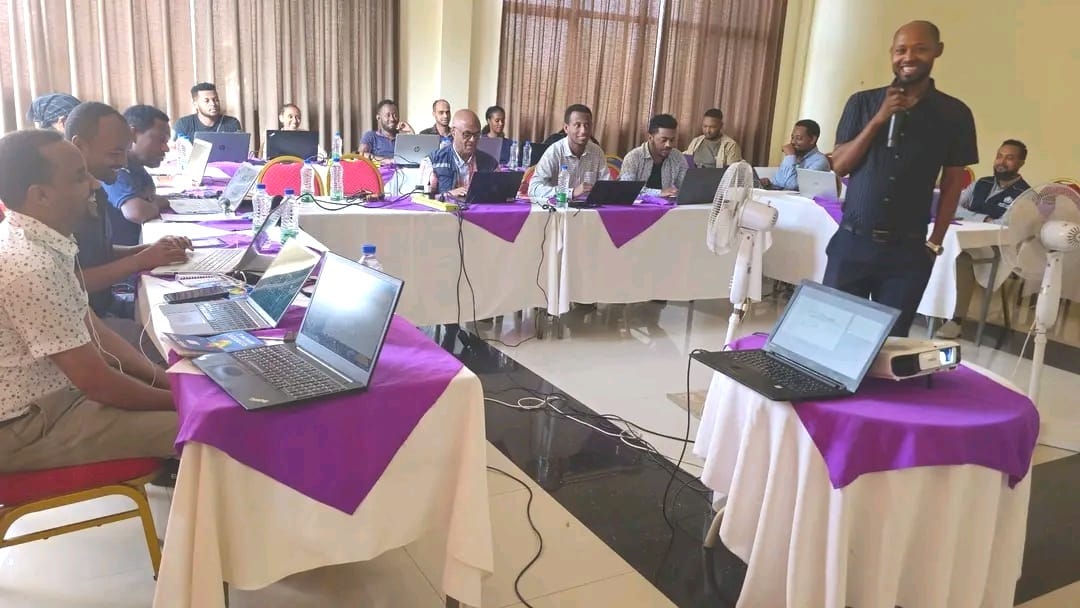Dear EIOS community member,
We are pleased to share with you the latest updates and highlights from across the initiative. From new country onboardings and training initiatives to system developments and evaluations, 2025 is already proving to be a year of growth and collaboration. We thank you for your continued engagement and contributions!
Expanding the EIOS community: New countries on board in 2025
Since the beginning of 2025, the EIOS community has continued to grow, with Benin, Comoros, and Pakistan joining the initiative. Their onboarding reflects a shared commitment to strengthening public health intelligence through collaboration, timely information sharing, and the use of advanced tools to support early detection and response efforts.
EIOS online courses now available on WHO Academy platform
We are delighted to announce that the EIOS online courses have officially migrated from OpenWHO to the WHO Academy platform- WHO’s new hub for learning and professional development. To ensure EIOS users continue to benefit from a comprehensive and engaging learning experience, the migration enabled the reintegration of quizzes and certificates of participation. We encourage all users to explore the new platform and continue building their skills in public health intelligence!
EIOS v.2.0 development: Behind the scenes
Exciting progress is underway on the rebuild of the EIOS system – EIOS v.2.0 – as the project team continues to refine and enhance the system’s core features and functionality.
Internal testing of the new Translation and User Management modules has been completed, with bug fixes and usability improvements being applied ahead of future external testing.
Development is also nearing completion on several key features within the Monitoring module, including the Time Filter and Chart, Communications and the redesigned Sources & Latest Activities screens, each designed to improve the user experience and analytical functionality.
With the infrastructure, the team has established new environments (DEV, TEST, PROD) and is working to ensure secure and seamless migration of v.1-data into the new system. Additionally, the new system is being configured to comply with WHO cybersecurity requirements.
Curious about the latest developments? Preview the progress on the SharePoint site.
Update on ProMED content in the EIOS system
Due to ProMED’s recent transition to a subscription-based model, new content from ProMED is no longer accessible through the EIOS system. While ProMED has been a valued source since the EIOS system was launched, we remain committed to supporting users with a wide range of alternative, trusted sources.
Do you have suggestions for other relevant information sources to include in the EIOS system? Get in touch with EIOS Core Team.
New categories added to the EIOS system in 2025
To support more targeted and effective public health intelligence efforts, several new categories were added to the EIOS system in Q1- Q2 2025. These additions reflect emerging issues, evolving threats, and user feedback across the EIOS community. The newly introduced categories include:
Medical Oxygen
Dzud (a severe weather phenomenon affecting livestock)
Bocavirus
Human Metapneumovirus
Endangered Species
Substandard and Falsified (SF) Medical Devices
Substandard and Falsified Nitazene
Carbon Monoxide Poisoning
Aid Workers’ Sexual Misconduct
Numerous categories have also been updated with keyword language translations including Mongolian, Georgian, and Moldovan.
These enhancements aim to ensure the EIOS system continues to meet the needs of users in monitoring a wide range of public health events.
Have suggestions on categories? Reach out to the EIOS Core Team.
Updates from the EIOS community
Hybrid EIOS system training in Ethiopia: The power of collaboration
In March 2025, Ethiopia hosted a hybrid refresher EIOS system training, marking a milestone in the rollout of the WHO Regional Office for Africa’s (AFRO) "EIOS Champions" strategy. Following the country’s onboarding in 2023, this training aimed to revitalize local capacity following staff turnover. The training combined on-the-ground sessions with virtual support from expert trainers at WHO AFRO, the WHO Regional Office for the Eastern Mediterranean (EMRO), and Uganda’s Ministry of Health. In-country EIOS champions, local experts trained to lead national efforts, played a critical role in guiding practical sessions and strategic discussions on epidemic intelligence. This approach not only maintained training continuity, but also fostered cross-regional collaboration and cost efficiency. Read the full article published by the WHO Ethiopia Country Office.
EIOS enhances early detection in the Americas
A new WHO report highlights how the EIOS system and its associated training efforts have significantly strengthened early warning capacities across the Americas. By enhancing event-based surveillance and real-time media scanning, EIOS has improved the accuracy and timeliness of threat detection, reinforcing its role in global health security. The findings reaffirm the value of integrating advanced tools like the EIOS system into routine surveillance systems—because the sooner we detect a threat, the sooner we can act. Read the full report.
COMMUNITY CLOSE-UP:
Name of Community: Georgia
Active in EIOS since: March 2023
Number of members: 35
How many different entities are represented in your community?
The community includes two main entities: the National Center for Disease Control and Public Health (NCDC) under the Ministry of Health, and the National Food Agency (NFA) under the Ministry of Environmental Protection and Agriculture.
What do you use EIOS for?
EIOS is used to monitor all-hazard threats, with a particular focus on infectious diseases, in line with NCDC’s scope of work. Monitoring activities primarily focus on both Georgia and neighboring countries to support early detection and response.
What do you like best about EIOS?
EIOS has significantly accelerated the establishment of EBS, particularly media monitoring, in Georgia. Before the introduction of EIOS, media monitoring was performed manually by checking each source individually. With the EIOS system, all relevant sources are integrated into a single platform, saving time and improving efficiency. A dedicated SOP was developed aimed at optimizing monitoring across the EIOS system and any complementary sources.






